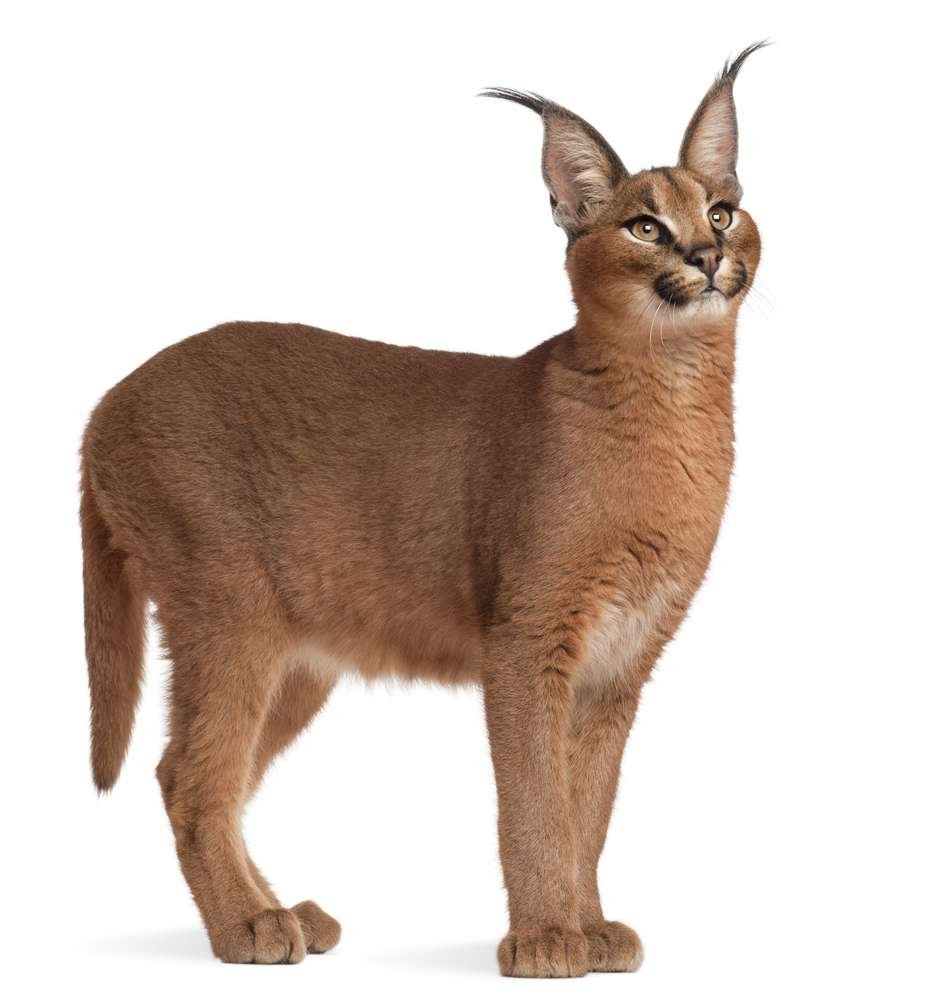Southern Caracal
- Caracal caracal caracal
- IUCN Status: Least Concern
- Trend: decreasing

- Kingdom: Animalia
- Phylum: Chordata
- Class: Mammalia
- Order: Carnivora
- Suborder: Feliformia
- Family: Felidae
- Subfamily: Felinae
- Genus: Caracal
Share:
General Information
Also known as the lynx of old. its name comes from the turkish phrase ‘Karrah-kulak’ or ‘Kara-coulac’, meaning ‘cat with black ears’. In ancient egypt they were tamed and in other parts if the world they were used for hunting.
Fun Facts!
Description
- Shoulder height: 40–50 cm
- Weight: 8–19 kg
- Lifespan: 16 yrs in captivity
Ecology and Behaviour
The caracal is typically nocturnal (active at night), though some activity may be observed during the day as well. However, the cat is so secretive and difficult to observe that its activity at daytime might easily go unnoticed. A solitary cat, the caracal mainly occurs alone or in pairs; the only groups seen are of mothers with their offspring. Females in oestrus temporarily pair with males. A territorial animal, the caracal marks rocks and vegetation in its territory with urine and probably with dung, which is not covered with soil. Claw scratching is prominent, and dung middens are typically not formed. They prey on small mammals, and birds, have a gestation of 10 weeks and live for as long as 17 yrs. Few cats can imitate the caracals sudden spring to pull down a bird in mid flight, sometimes as high as 3 m, a remarkable feat for such a small animal. The soft thick coat has no distinct stripes but is clearly spotted on the underside and has a shorter tail than any other African cat.
Conservation
The caracal is listed as Least Concern on the IUCN Red List since 2002
Distribution and Habitat
Present throughout the country but very rarely seen the caracal is a beautiful cinnamon coloured member of the cat family.
Interaction with humans
It is tolerant to human-dominated areas, although it has been persecuted for many decades. Farmers are encouraged to report sightings of caracals, both dead and alive, and livestock killed by caracals to the wildlife authority.
No donation to this project yet.
| M | T | W | T | F | S | S |
|---|---|---|---|---|---|---|
| 1 | 2 | 3 | 4 | 5 | 6 | 7 |
| 8 | 9 | 10 | 11 | 12 | 13 | 14 |
| 15 | 16 | 17 | 18 | 19 | 20 | 21 |
| 22 | 23 | 24 | 25 | 26 | 27 | 28 |
| 29 | 30 | 31 | ||||


